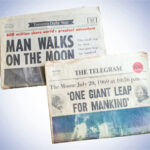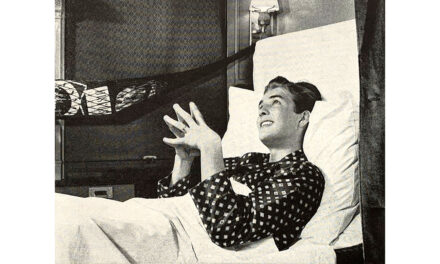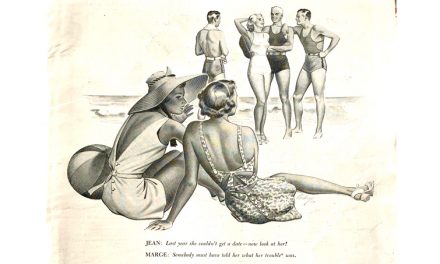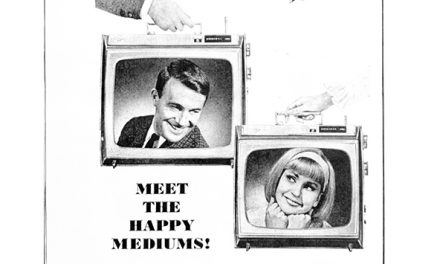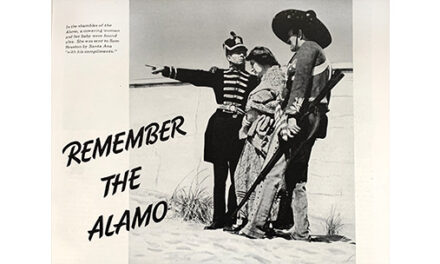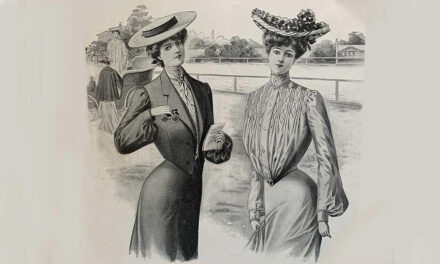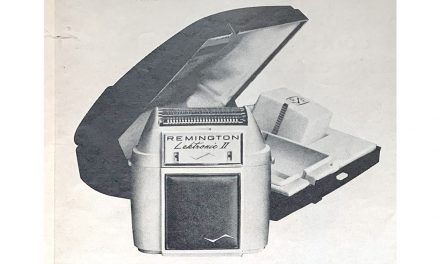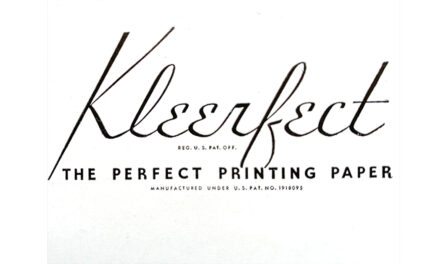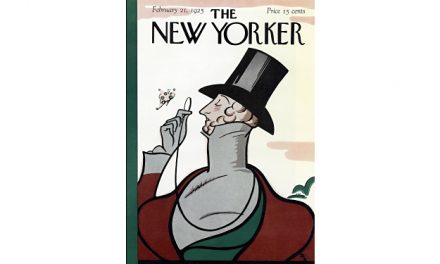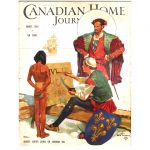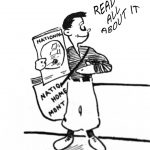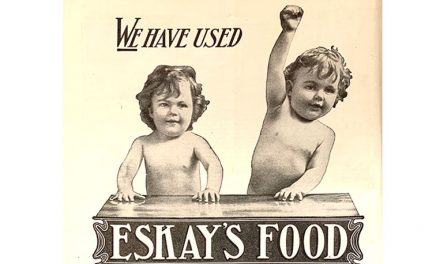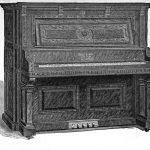
The printer’s devil
an apprentice in a printing establishment who performed
a number of tasks,
such as mixing tubs of ink
and fetching type.
Look for comments by our
Printers Devil throughout the Printing Times
Magazines…
Newspapers…
Trade papers…
you’ll find very few of them in print today
The world of letterpress, lithography, and rotogravure printing has almost disappeared. Typesetting is not dependent upon the skilled hands of compositors, or the nimble fingers of linotype and monotype operators. And who needs to know that type high is .918 of an inch? Who cares to differentiate between a stereotype and a zinc? Where would you find a matrix? You won’t find a hell box anywhere today. Or a frisket. Or quoins. There is no longer a job for a printer’s devil.
…so this website draws your attention
to the print world of the 20th Century
Primarily the world of advertising, although you’ll find lots of commentary on technology and journalism. We seek to illustrate how advertising changed as technology evolved and how copywriting and artwork reflected variations in societal norms of the last century.
Print advertisements reflect
how life was lived in the 20th Century
Advertising in the last century, print advertising specifically, showcased life as it was lived across the western world. Advertisements simply announced the better mousetraps, how they were better and where they could be purchased. Consumers did beat paths to advertisers’ doors, at least to those whose messages were presented creatively.
And that is what this website is all about. It is not an anthology of great advertising. It doesn’t sell. It tells stories, called posts today on websites like this, about advertising creativity in print media of the past.
Explore the stories, marvel at the creativity or lack of it, compare these print advertisements with today’s commercials on broadcast media, and shed a little tear for days gone by.
“Smoking Camels is a positive aid to good digestion!”
Smoking Camels “sets up a generous flow of digestive fluids. Increases alkalinity. What a sense of well-bring comes to those who smoke Camels at mealtime!”
Pullman made promises: passengers were impressed
The Pullman Company segmented the train travel market with different advertisements creatively appealing to different passenger groups.
Halitosis wasn’t invented by Listerine but you don’t want it
First there was the unspoken problem. Halitosis! Then a friend would offer a solution. Use Listerine! Then happiness!
What can you say about Kleenex Tissue?
Kimberley Clark built a highly successful advertising campaign based on the claim that Kleenex Tissue “pops right up to meet you,” because it is “the only tissue that meets you halfway”.
A match made at the Soda Fountain…ice cream and soda
For more than 100 years the soda fountains in American pharmacies were meeting places for young and old.
Over the past 15 years, the United States has lost 2,100 newspapers, leaving at least 1,800 communities that had a local news outlet in 2004 without any at the beginning of 2020.
In only two decades, successive technological and economic assaults have destroyed the for-profit business model that sustained local journalism in the United States for two centuries. Hundreds of news organizations – century-old newspapers as well as nascent digital sites – have vanished. By early 2020, many survivors were hanging on by the slimmest of profit margins.
Use the link below to read about it in the fourth report by the UNC Hussman School of Journalism and Media, documenting and analyzing the loss of local news and its implications for democracy.
Goodbye to the Hometown Paper
Washington Post Magazine Columnist Margaret Sullivan started out in a vibrant local-newspaper industry. Now that industry is vanishing. Writing about the decline of local news, Ms. Sullivan writes: “The consequences of rapidly vanishing local newspapers may not always be obvious, but they are insidious. Between 2008 and 2017, American newspapers cut 45 percent of their newsroom staffs; even deeper cutbacks came in the years after that. Some of the most trusted sources of news are slipping away, never to return.”
You can read Margaret Sullivan's concerns in Washington Post Magazine and in her book: Ghosting the News: Local Journalism and the Crisis of American Democracy
Blank Space is the foundation for every print advertisement
Every advertiser begins by buying blank space. The challenge is to fill the space creatively. These trade paper advertisements by The New Yorker are outstanding
You could conquer common ills eating Fleischmann’s Yeast
100 years ago Fleischmann’s Yeast promised that eating their fresh yeast cakes would end indigestion, banish constipation, eliminate skin eruptions—and more!
America’s local newspapers confront an apocalypse
Reporting on March 31, 2020 in the newsletter The Media Today, published by the Columbia Journalism Review, freelance journalist Jon Allsop summarized employee layoffs, “temporary furloughing” and paycuts at local newspapers across the United States.
Read HERE what was a torrent of dire news
Campbell’s Soup had free advice for idealized mothers and wives
1950s advertising campaign for Campbell’s Soup Company went a long way to advance the advice that everybody should eat soup every day with the meal, or as a meal
Is great advertising great because of great ideas?
The J. Walter Thompson Company, once one of the world’s leading advertising agencies, claimed to be the “idea” agency.
Ed Benguiat, a Master of Typography,
died Oct. 15, 2020, age 92
A noted graphic designer, he was an expert in typefaces, developing many himself and “fixing” others. His work adorns The New York Times. Mr. Benguiat was an important figure in the design world for a number of reasons. According to his citation in the Art Directors Club Hall of Fame, where he was inducted in 2000, he helped establish the International Typeface Corporation, the first independent licensing company for type designers, and became its vice president. He also taught for almost 50 years at the School of Visual Arts in Manhattan.
Read about Mr. Benguiat in this account
from The New York Times, October 18, 2020
Copywriting is an ever-lasting challenge
The history of paper-making as Kimberly-Clark told it in the 1930s
Little known facts about the history of paper and paper-making wonderfully woven together to create intriguing advertising campaign promoting Kimberly-Clark’s paper.
Challenge! Can you identify the auto in these 1997 car ads?
Here’s a challenge: from the message alone, identify the automobile featured in seven 1997 car ads
Search America's historic newspaper pages
from 1777-1963 or use the U.S. Newspaper Directory to find information about American newspapers published between 1690-present
Chronicling America (ISSN 2475-2703) is a Website providing access to information about historic newspapers and select digitized newspaper pages, and is produced by the National Digital Newspaper Program (NDNP).
NDNP, a partnership between the National Endowment for the Humanities (NEH) and the Library of Congress (LC), is a long-term effort to develop an Internet-based, searchable database of U.S. newspapers with descriptive information and select digitization of historic pages.
- Copywriting
- Graphics
- Publishing
- Advertisers
Copywriting befitting The New Yorker, noted for its prose
The New Yorker magazine is noted for journalism, commentary, criticism, essays, fiction, satire, cartoons, and poetry. Add creative advertising to the list.
Bad typography makes ad unreadable
The art director's typography decisions showed little understanding of effective design in this Yellow Pages advertisement that appeared in Printer's Ink
Email powers Direct Mail today
Before there was Amazon.com there was Montgomery Ward which published catalogues to sell just about everything using direct mail.
Did Eskay’s Food, the “Hot Weather Food”, help undernourished babies grow strong and healthy?
Babies in 1903 grew stronger and healthier when fed Eskay's baby food, especially in hot weather. Was it effective in treating Cholera Infantum?



